Cicada’s cries ring out in the hot air and their discarded exoskeletons decorate tree branches in the southeast and midwest United States at the height of summer. While their ability to emerge in huge numbers is astounding, they have other surprising features too. In fact, their wings kill bacteria on contact and are self-cleaning. Researchers using the Department of Energy’s (DOE) Oak Ridge National Laboratory and Brookhaven National Laboratory user facilities investigated this bizarre phenomenon. They learned how structures in the cells are able to pull off such a feat and how it could be used in medical applications.
Tag: Microbiology
Bacterial proteins shed light on antiviral immunity
A unique collaboration between two UT Southwestern Medical Center labs – one that studies bacteria and another that studies viruses – has identified two immune proteins that appear key to fighting infections.
Nature’s 3D printer: bristle worms form bristles piece by piece
A new interdisciplinary study led by molecular biologist Florian Raible from the Max Perutz Labs at the University of Vienna provides exciting insights into the bristles of the marine annelid worm Platynereis dumerilii. Specialized cells, so-called chaetoblasts, control the formation of the bristles. Their mode of operation is astonishingly similar to that of a technical 3D printer. The project is a collaboration with researchers from the University of Helsinki, Vienna University of Technology and Masaryk University in Brno.
UTSW Research: Improved bladder cancer detection, tracking gamma waves, and more
Blue light improves bladder cancer detection across races; Gamma waves distinguish goal-oriented movements; Giving abnormal bone formation a closer look; Dissecting the HIV-1 transcriptional circuitry
UT Southwestern scientists discover antiviral immune pathway
By focusing on a poxvirus protein, a team led by UT Southwestern Medical Center scientists has discovered an antiviral immune pathway that broadly fights a wide variety of viruses. Their findings, reported in Nature Microbiology, could eventually lead to new ways to prevent or treat viral infections or thwart autoimmune diseases.
Nanoparticles developed at UTSW effectively fight tumors
A nanoparticle-based therapy developed by UT Southwestern Medical Center scientists stimulated an immune pathway that eradicated tumors in mouse models of various cancer types. Their findings, published in Science Immunology, offer a new way to potentially harness the power of the body’s immune system against cancer.
Binghamton University biologist named Fellow of American Academy of Microbiology
Binghamton University, State University of New York researcher Karin Sauer is among 65 scientists elected as Fellows of the American Academy of Microbiology this year. Fellows are elected by their peers based on their scientific achievements and original contributions to the field of microbiology.
In Memoriam: Jonathan W. Uhr, M.D., renowned immunologist and longtime Chair of Microbiology
Jonathan W. Uhr, M.D., Professor Emeritus of Immunology at UT Southwestern Medical Center, who discovered how antibodies are made and developed a technique that led to the early detection of cancer cells, died Feb. 15. He was 96. Dr. Uhr was a member of the National Academy of Sciences and the American Academy of Arts and Sciences.
Why studying astronauts’ microbiomes is crucial to ensure deep space mission success
Space exploration is a complex and risky mission that requires careful preparation and a thorough understanding of the challenges inherent to life in space
New Technology Unscrambles the Chatter of Microbes
Researchers from University of California San Diego have developed a new search tool to that can match microbes to the metabolites they produce with no prior knowledge, an innovation that could transform our understanding of both human health and the environment.
Media Tip: Argonne’s Advanced Photon Source to accelerate biological and environmental research
In October 2023, the Advanced Photon Source (APS), a U.S. Department of Energy (DOE) Office of Science user facility at DOE’s Argonne National Laboratory, officially launched a new initiative to expand biological and environmental research at the world leading X-ray and analysis facility.
Using Different Flours for Sourdough Fosters Different Bacteria – and Flavors
A new study of the microbial ecosystem in sourdough finds that using different types of flour fosters distinct bacterial communities, and that these differences contribute to the variation of sourdough aromas and flavors.
Two UT Southwestern researchers awarded HHMI Hanna H. Gray Fellowships
Two postdoctoral researchers at UT Southwestern Medical Center are among 25 early-career scientists nationwide selected as Howard Hughes Medical Institute (HHMI) Hanna H. Gray Fellows for 2023.
Gotcha! New technology speeds up bacterial testing in food
It is said that there is waste in haste, but researchers from Osaka Metropolitan University have proven that doing things rapidly does not necessarily mean working ineffectively.
Whole Orchard Recycling Provides Alternative to Burning Trees
Whole orchard recycling is an alternative process for disposing of trees at the end of their productive lives. Researchers are studying how this process may also help improve nitrogen in soils. Hear a microbiologist explain whole orchard recycling on the Environmental Molecular Sciences Laboratory’s Bonding Over Science podcast.
Intestinal bacteria release molecular ‘brake’ on weight gain
Bacteria that live in the intestines inhibit a molecule that limits the amount of fat absorbed, increasing weight gain in mice fed a high-sugar, high-fat diet, researchers from UT Southwestern Medical Center report. The findings, published in Science, could eventually lead to new ways to combat obesity, diabetes, and malnutrition – health problems that plague hundreds of millions worldwide.
Race-based variations in gut bacteria emerge by 3 months of age
Variations in the gut microbiome are linked to the incidence and mortality of diseases. A new study highlights a critical development window during which these differences emerge. The findings are based on analysis of data from 2,756 gut microbiome samples from 729 U.S. children between birth and 12 years of age.
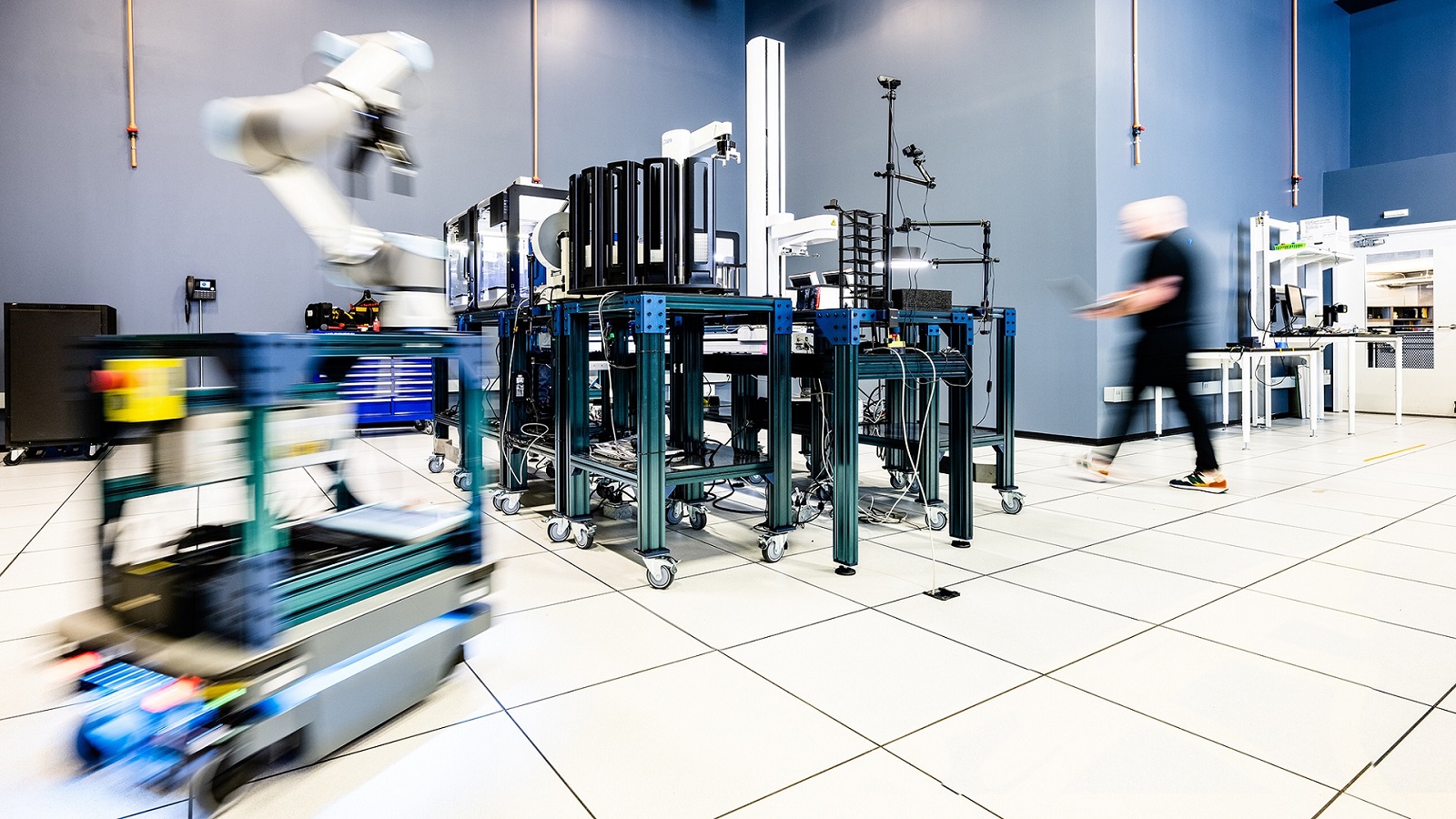
Autonomous discovery defines the next era of science
Argonne National Laboratory is reimagining the lab spaces and scientific careers of the future by harnessing the power of robotics, artificial intelligence and machine learning in the quest for new knowledge.
Astonishing complexity of bacterial circadian clocks
An international team led by LMU chronobiologists analyses circadian rhythms in microorganisms – and observes mechanisms that are reminiscent of clocks in more complex organisms.
Promising Results of Next-Generation Intranasal COVID-19 Booster Vaccine: Implications for Infection Prevention and Transmission
The Icahn School of Medicine at Mount Sinai in New York, NY is pleased to announce that CastleVax, Inc. has completed enrollment and a preliminary analysis of a phase 1 trial of its licensed Newcastle disease virus (NDV)-based COVID-19 booster vaccine.
Discovery could lead to more treatments to prevent cancer and infectious diseases
Researchers have cracked how a particular type of immune cell develops in the body and protects against infection and disease. And the discovery could help in the development of more preventive treatments, according to a new study.
Breakthrough microscopy technique “supersizes” cells to reveal genetic activity
Breakthrough microscopy techniques are helping researchers visualize the ways our molecules interact with the human genome. Researchers at Yale School of Medicine used a series of expandable gels to pull apart a cell and expand it to 4000 times its…
Study reveals workings of promising Copper deficiency drug
Research at Argonne National Laboratory’s Advanced Photon Source has revealed a key mechanism behind a promising drug for copper deficiency disorders.
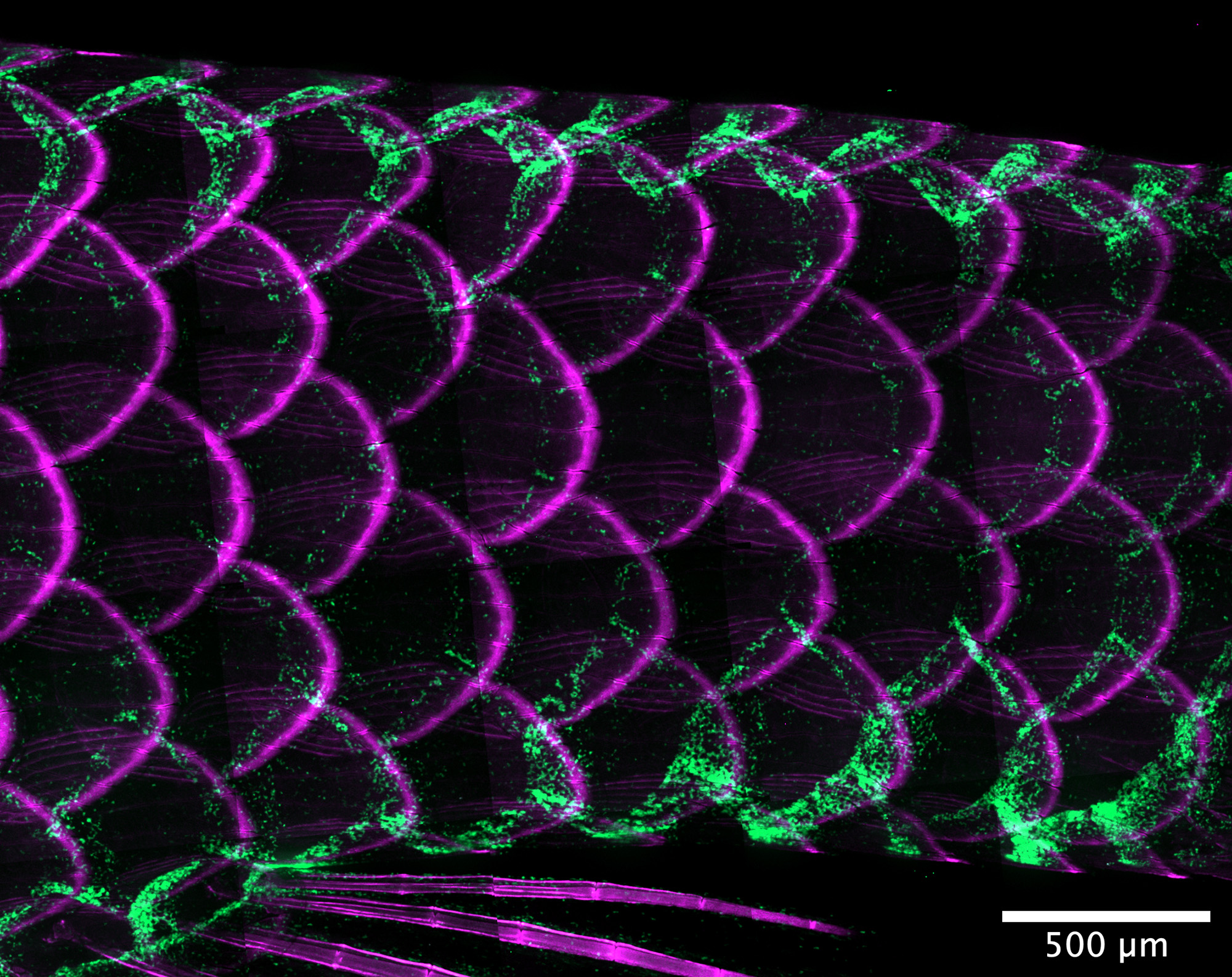
In a first, researchers image adaptive immune systems at work in fish
A new study from researchers at the University of Wisconsin–Madison offers a first-of-its-kind visual of a non-mammal species’ adaptive immune system in action. The advance holds potential implications for a range of scientific aims, from improving wildlife vaccines to better understanding fundamental disease processes and possibly the evolution of adaptive immunity itself.
A New Strategy to Break Through Bacterial Barriers in Chronic Treatment-Resistant Wounds
Researchers in UNC’s School of Medicine’s department of Microbiology and Immunology and the UNC-NC State Joint Department of Biomedical Engineering have developed a new strategy to improve drug-delivery into chronic wounds infections.
Relatives discovered: Membrane proteins of cyanobacteria and higher organisms are structurally highly similar
The cells of living organisms are equipped with proteins that are involved in the shaping and remodeling of cellular membranes, thereby performing important tasks.
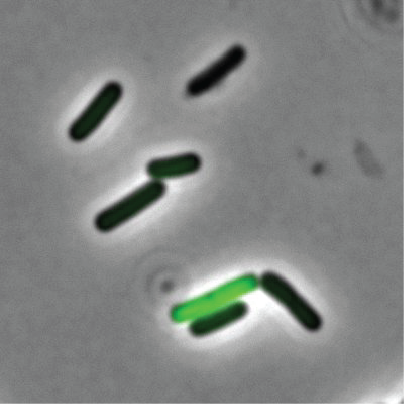
New Research Shows That Bacteria Get “Hangry,” Too
The findings, published in Nature Microbiology, are particularly important in understanding how and why bacterial communities defer duties to certain cells – and could lead to new ways to tackle antibiotic tolerance further down the line.
The genetics of temperature adaptation: how does life thrive in extreme conditions?
The history of the Earth has been one of physical extremes—extreme atmospheric conditions, extreme chemical environments, and extreme temperatures.
UNLV Study Sheds Light on Ancient Microbial Dark Matter
Omnitrophota are nano-sized bacteria first discovered 25 years ago. Though common in many environments around the world, until now they’ve been poorly understood. An international research team produced the first large-scale analysis of Omnitrophota genomes, uncovering new details about their biology and behavior. The team’s findings are reported in the March 16 issue of the journal Nature Microbiology.
Healthy gut bacteria can help fight cancer in other parts of the body, UTSW researchers find
Researchers at UT Southwestern Medical Center have discovered how healthy bacteria can escape the intestine, travel to lymph nodes and cancerous tumors elsewhere in the body, and boost the effectiveness of certain immunotherapy drugs. The findings, published in Science Immunology, shed light on why antibiotics can weaken the effect of immunotherapies and could lead to new cancer treatments.
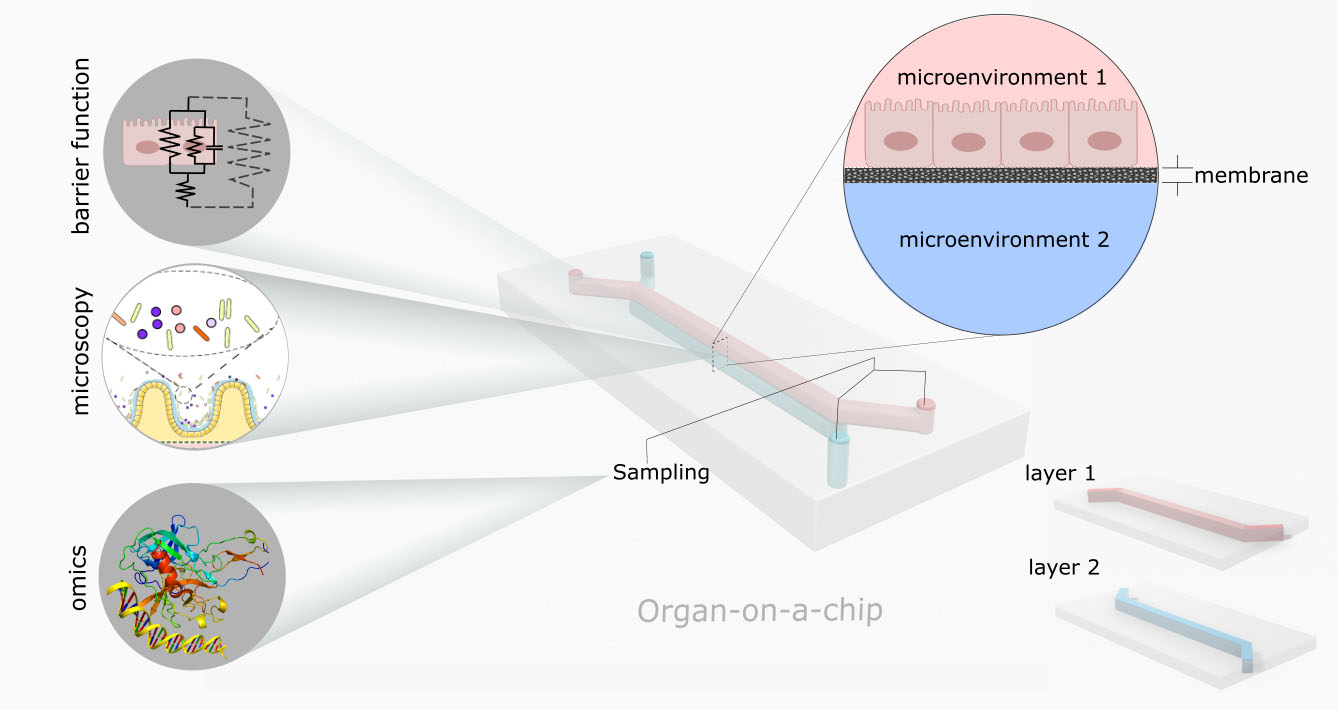
Your Gut’s Microbiome, On a Chip
In APL Bioengineering, researchers describe how gut-on-a-chip devices can bridge lab models and human biology. Modeling the microbiome is particularly difficult because of its unique environmental conditions, but through creative design, gut-on-a-chip devices can simulate many of these properties, such as the gut’s anaerobic atmosphere, fluid flow, and pulses of contraction/relaxation. Growing intestinal cells in this environment means that they more closely resemble human biology compared to standard laboratory cell cultures.
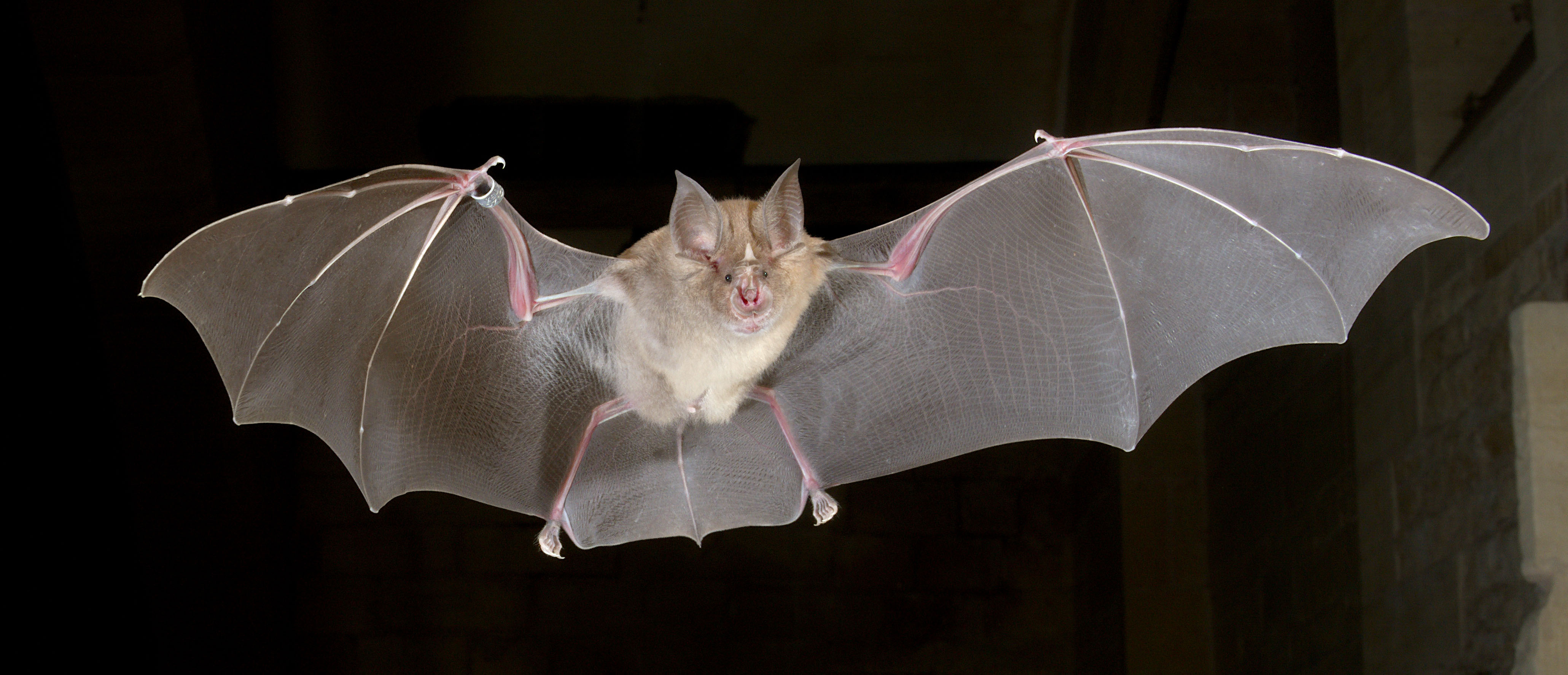
First Stem Cells From a Bat Species Known to Harbor SARS-CoV-2 Could Shed Light on Virus Survival and Molecular Adaptability
Researchers from the Icahn School of Medicine at Mount Sinai have generated the first induced pluripotent stem cells (iPSCs) from bats, gaining valuable insights into the close relationship between bats and viruses.
Argonne researchers share in Chicago Innovation Award for COVID wastewater testing
Argonne’s expertise in biosafety, genetic sequencing and epidemiology help public health officials track which COVID variants are present in Illinois and monitor variants of concern.
Beyond the average cell
Models based on an average cell are useful, but they may not accurately describe how individual cells really work. New possibilities opened up with the advent of single-cell live imaging technologies. Now it is possible to peer into the lives of individual cells. In a new paper in PLOS Genetics, a team of biologists and physicists from Washington University in St. Louis and Purdue University used actual single-cell data to create an updated framework for understanding the relationship between cell growth, DNA replication and division in a bacterial system.
Prion of yeasts can help to understand the characteristics of the development of neurodegenerative diseases
Scientists from the Federal Research Centre “Fundamentals of Biotechnology” of the Russian Academy of Sciences made the overall review of the characteristics of yeast prions – special protein structures, that are able to multiply steadily and be inherited by several generations of yeast.
Microbial miners could help humans colonize the moon and Mars
The biochemical process by which cyanobacteria acquire nutrients from rocks in Chile’s Atacama Desert has inspired engineers at the University of California, Irvine to think of new ways microbes might help humans build colonies on the moon and Mars.
UT Southwestern scientists among top 1% of highly cited researchers across the globe
More than 20 UT Southwestern Medical Center scientists are among the 2022 Highly Cited Researchers listed in the top 1% of researchers from across the globe
James McKinlay : Then and Now / 2012 Early Career Award Winner
James McKinlay is an associate professor of biology at Indiana University. His group used genetics, analytical chemistry, and computational modeling to identify factors that determine hydrogen gas production levels. More broadly, we identified factors that govern cooperative relationships between microbes.

Methane-Eating ‘Borgs’ Have Been Assimilating Earth’s Microbes
In Star Trek, the Borg are a ruthless, hive-minded collective that assimilate other beings with the intent of taking over the galaxy. Here on nonfictional planet Earth, Borgs are DNA packages that could help humans fight climate change.
ISU lab aims to repair severed nerves, foster undergraduate research
Undergraduate students at ISU are part of a research team testing different structures that could be used to help patients recover from traumatic nerve injuries.
Scientists Unveil New System for Naming Majority of the World’s Microorganisms
In an article published Sept. 19 in the journal Nature Microbiology, a team of scientists present a new system, the SeqCode, and a corresponding registration portal that could help microbiologists effectively categorize and communicate about the massive number of identified yet uncultivated single-celled microorganisms known as prokaryotes.
Study uncovers differences in saliva bacteria of students with recent suicidal thoughts
Adding to a growing body of research on mental health and the human microbiome, a new study compared the bacteria in the saliva of students with and without recent thoughts of suicide, called suicidal ideation
Vircell launches Amplirun® Monkeypox Virus DNA Control, an independent molecular control to combat the current outbreak
Vircell, leading provider of independent external run controls for nucleic acid testing, announces the launch of a new independent molecular control which will help laboratories all over the world to combat the current outbreak
Ancient microbes may help us find extraterrestrial life forms
Using light-capturing proteins in living microbes, scientists have reconstructed what life was like for some of Earth’s earliest organisms. These efforts could help us recognize signs of life on other planets, whose atmospheres may more closely resemble our pre-oxygen planet.
Giant Bacteria Found in Guadeloupe Mangroves Challenge Traditional Concepts
In Science, researchers describe a “’macro’ microbe” – a giant filamentous bacterium composed of a single cell discovered in the mangroves of Guadeloupe. Using various microscopy techniques, the team also observed novel, membrane-bound compartments that contain DNA clusters dubbed “pepins.”
Watching Plant Roots Grow in a Transparent Simulated Soil
The rhizosphere, the underground ecological zone between and around plant roots, is difficult to study. Scientists have now developed a rhizosphere-on-a-chip with a transparent simulated soil structure that allows researchers to view how roots grow over time through the pores in the soil. Paired with specialized mass spectrometry techniques, scientist can also use the rhizosphere-on-a-chip to map the location of root-exuded molecules, like amino acids, without hurting the plant.
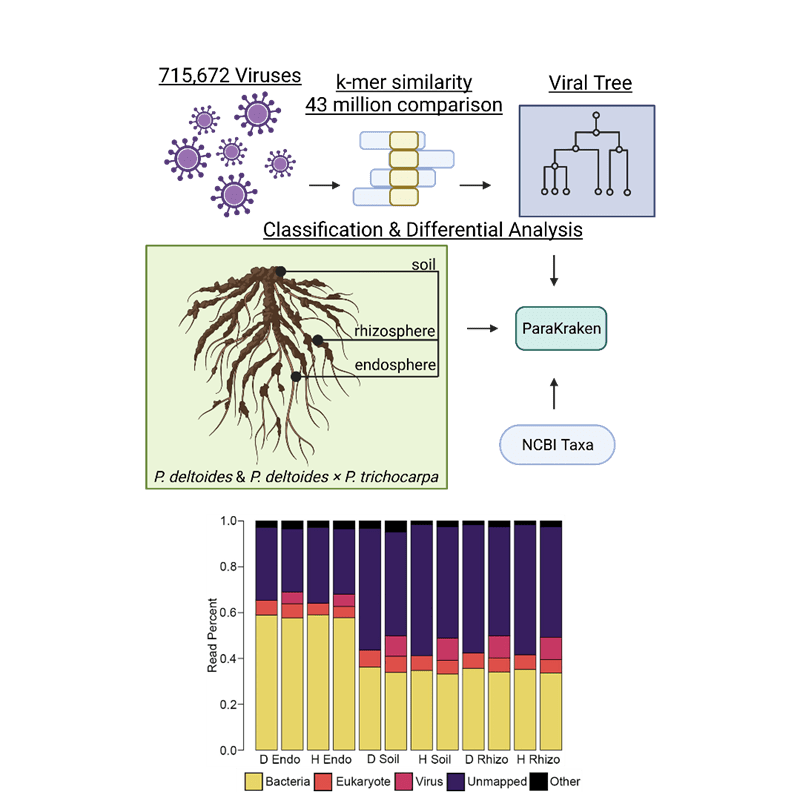
A New Approach Produces a 90-Fold Increase in Known Viral Taxa
Viruses play an essential role in regulating microbiomes. However, the use of metagenomics and metatranscriptomics have produced taxonomies of only a tiny proportion of the world’s viruses. In this study, researchers used a novel algorithm to compare and incorporate 715,672 metagenome viruses from environmental samples around the world. This expands the viral taxa available to researchers from about 8,000 to 723,672. The scientists then used the data to examine samples from two Populus tree genotypes.

Low levels of high-risk salmonella evade traditional methods of detection
Poultry is responsible for more than one out of every five cases of salmonella infection in the U.S. But traditional methods of testing the chicken you grab off the grocery shelf may not be enough to detect all strains of the bacteria, according to new research from the University of Georgia.
Cleveland Clinic Appoints Ted Ross, Ph.D., as Global Director of Vaccine Development
Ted Ross, Ph.D., has been appointed Global Director of Vaccine Development at Cleveland Clinic.
In this newly created role, he will lead the development of novel vaccine platforms for a variety of infectious diseases, including influenza, HIV and COVID-19. A highly renowned scientist with expertise in virology, vaccines, immunology and microbiology, Dr. Ross’ research focuses on the design of new vaccines and the implementation of new vaccine trials.

The significance of all life can be left in traceable way: Freshwater pearl mussels
Freshwater pearl mussels are found in rivers in Japan.